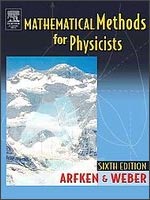 Title: Mathematical Methods for Physicists, Sixth Edition
Title: Mathematical Methods for Physicists, Sixth Edition| Link type | Link | Password |
|---|---|---|
| Mirror | http://mihd.net/cn04bax | www.freebookspot.com |
| Book | http://uploading.com/files/1m64811m/0120885840%2BMathematical_Methods_for_Physicists.rar/ | |
| http://depositfiles.com/files/s6ittpz2r | ||
| http://www.filesonic.com/file/27481379/optima.rar |